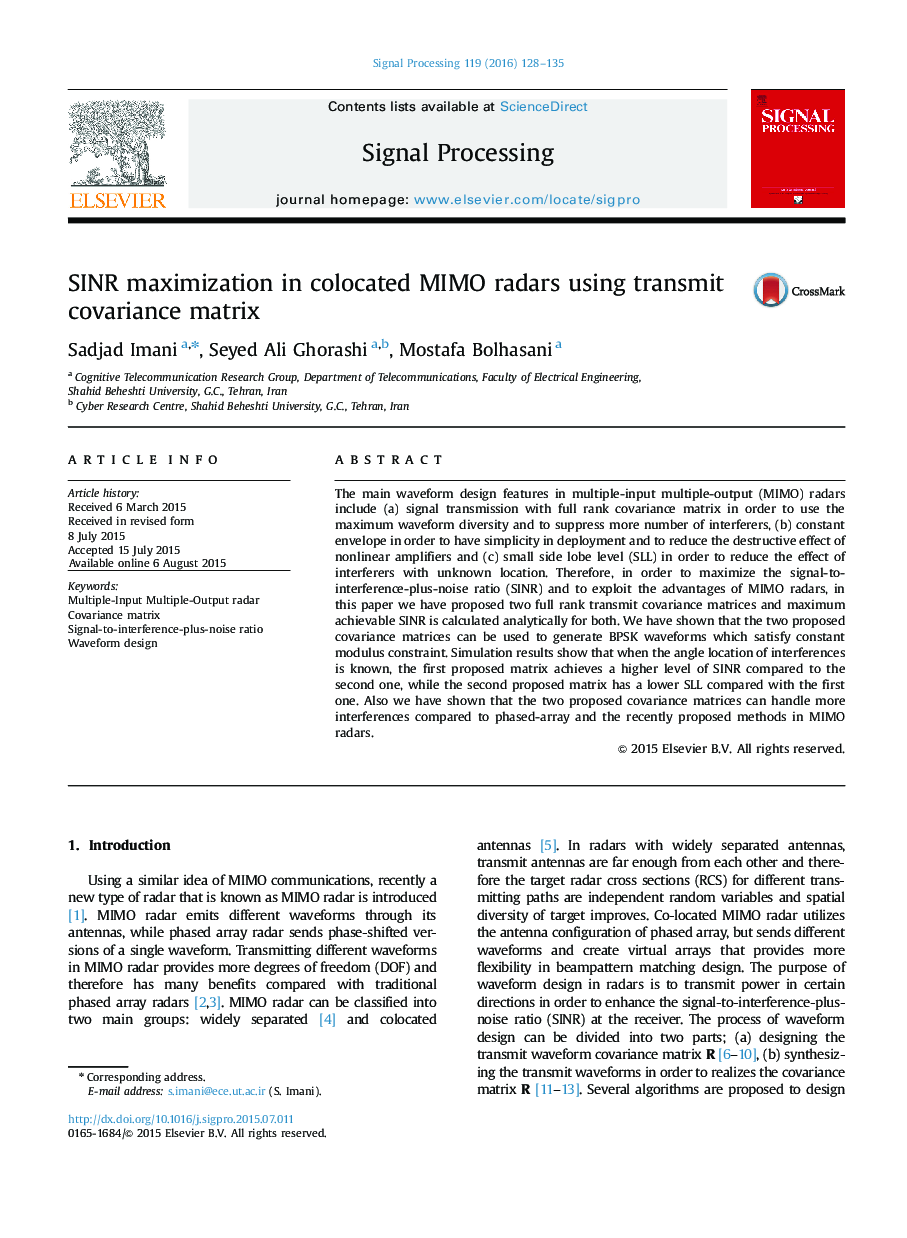| Article ID | Journal | Published Year | Pages | File Type |
|---|---|---|---|---|
| 562337 | Signal Processing | 2016 | 8 Pages |
•We proposed two covariance matrices in order to maximize the signal-to-interference-plusnoise ratio (SINR) and to exploit the advantages of MIMO radars.•Two proposed matrices are full rank to suppress more interferences.•Maximum achievable SINR is calculated analytically for both.•Using these matrices enables us to transmit BPSK samples with the same covariance matrix.•The second proposed matrix has a low side lobe level and therefore has a good performance in the case of unknown interference location.
The main waveform design features in multiple-input multiple-output (MIMO) radars include (a) signal transmission with full rank covariance matrix in order to use the maximum waveform diversity and to suppress more number of interferers, (b) constant envelope in order to have simplicity in deployment and to reduce the destructive effect of nonlinear amplifiers and (c) small side lobe level (SLL) in order to reduce the effect of interferers with unknown location. Therefore, in order to maximize the signal-to-interference-plus-noise ratio (SINR) and to exploit the advantages of MIMO radars, in this paper we have proposed two full rank transmit covariance matrices and maximum achievable SINR is calculated analytically for both. We have shown that the two proposed covariance matrices can be used to generate BPSK waveforms which satisfy constant modulus constraint. Simulation results show that when the angle location of interferences is known, the first proposed matrix achieves a higher level of SINR compared to the second one, while the second proposed matrix has a lower SLL compared with the first one. Also we have shown that the two proposed covariance matrices can handle more interferences compared to phased-array and the recently proposed methods in MIMO radars.
